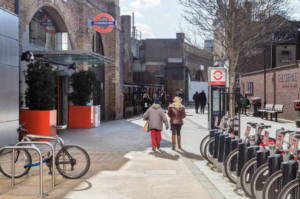Recently the Mayor of London presented his Transport Strategy. The strategy takes on integrated approach to urban freight as well. Making streets work for people will provide huge economic benefits not only through revitalising town centres and attracting business to London, but also by freeing up space for the essential freight and commercial journeys that keep London’s businesses functioning.
Improving the efficiency of freight and commercial traffic, alongside reductions in car use, will help to keep London’s streets operating well for the benefit of the city’s businesses and the Londoners who rely on them. Without action now, freight traffic in the central London morning peak is expected to increase by up to 10 per cent in the next ten years. Accordingly, the Mayor aims to reduce freight traffic in the central London morning peak by 10 per cent on current levels by 2026, and to reduce total London traffic by 10-15 per cent by 2041, to help keep streets operating efficiently for essential business and public transport trips.
Use of space
The impact of freight and servicing are felt on London’s streets in many ways. Both when loading and when moving, freight vehicles take up large amounts of street space that could otherwise be used for walking, cycling, public transport use or as space for people to spend time in and enjoy. They make a significant contribution to congestion, and in order to provide high levels of customer service as congestion worsens, freight and servicing operators often use more and more vehicles in a less efficient way, exacerbating this problem significantly. This is in no one’s interest – it eats into operators’ profit margins, increases costs for customers and makes London’s streets less attractive for everyone visiting, living in or working in the city.
Zero emission
To allow London’s businesses to continue to receive the goods and services they need to flourish, while ensuring that London’s streets become better places for people, all aspects of freight and servicing activity must be actively managed in an integrated way. This is particularly important in zero emission zones and in places – like Oxford Street – that will be transformed to create pedestrian areas.
Strong partnership working and the involvement of the whole supply chain will be essential to help make more efficient use of London’s street network.
Intermodal: improving the efficiency of freight networks
About 90 per cent of freight trips, and the majority of servicing trips, are carried out by road. Rail and water carry the remainder, and are particularly important for heavy and containerised goods, with about 40 percent of construction materials being brought into London by rail, for example.
Shifting more freight onto these cleaner modes will enable improvements to be made against the Healthy Streets Indicators, help to reduce congestion, improve road safety and free up space on the road network for walking, cycling and buses.
London will also review the potential benefits of a regional freight consolidation and distribution network and completing the network of construction consolidation centres in London.
Source: City of London

